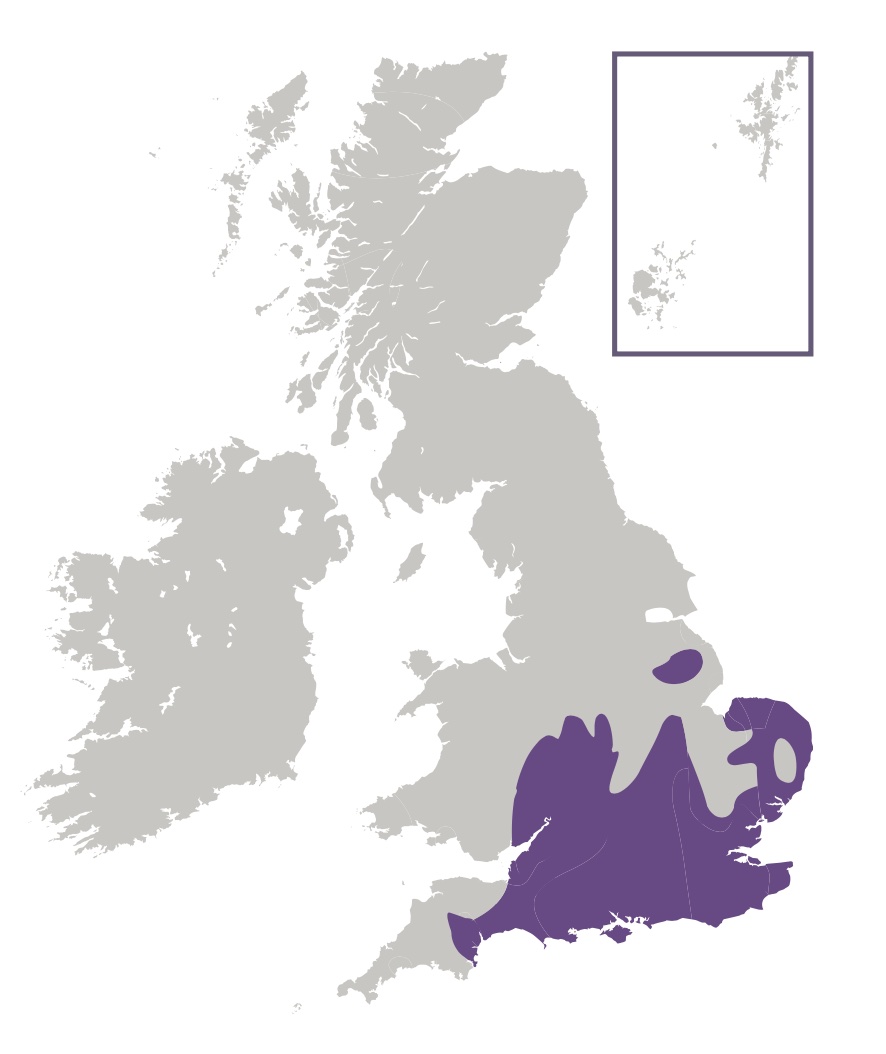
Photo © Peter Eeles
The White Admiral is a woodland species and a delight to behold as it literally glides along forest rides, flying from tree to forest floor and back up with only a few effortless wing beats. For this reason, some of its closest relatives on the continent are known as "gliders". When settled, the adults are unmistakable, with their black uppersides intersected by prominent white bars. The undersides of this butterfly are, however, in complete contrast to the black-and-white uppersides, and are surely one of the most beautiful of all species found in the British Isles.
The butterfly is found in central and southern England, south of a line between South Devon in the west and North Lincolnshire in the east, as well as in a few scattered colonies in the eastern counties of Wales. It is not found in Scotland, Ireland or the Isle of Man. The distribution of this species in the early 1900s had declined to the point that it was restricted to southern England. However, there seems to have been a reversal of fortunes, with the butterfly reaching its former distribution that extends as far north as Lincolnshire. One explanation is that global warming has allowed the species to thrive at sites that had become too cool. Another is that the cessation of coppicing, that has been detrimental to so many woodland butterflies, has benefited this species which requires Honeysuckle growing in shady woodland for the successful development of its larvae.
Males and females are similar in appearance, although females are slightly browner and larger, and have more-rounded wings. The adults feed from honeydew and are particularly partial to Bramble blossom. It is not uncommon, on good sites, to see several White Admiral all feeding from the same Bramble patch. A downside of this, however, is that their wings can get tatty very quickly, as they move around Bramble blossom, probing for nectar. The adults will also feed on salts and minerals from moist earth and animal droppings.
The behaviour of the female when egg-laying is in complete contrast to the normal soaring flights, making her easy to spot. The female flits low in undergrowth or through shaded woodland, stopping every now and again on the foodplant to lay a single egg. The female selects Honeysuckle that is in partial shade, often at the edge of a woodland ride or in lightly-shaded woodland. She also selects leaves on straggly pieces of isolated plant, rather than the lushest leaves that are often growing in full sun.

This is a woodland butterfly and is found in deciduous woods throughout its distribution. However, it can also be found in conifer plantations, so long as Honeysuckle is available in suitable locations.
Adults feed primarily on brambles (Rubus spp.) and Honeydew (N/A). Betony (Betonica officinalis), thistles (Carduus spp. and Cirsium spp.), umbellifers (Apiaceae spp.) and Wild Privet (Ligustrum vulgare) are also used.
The primary larval foodplant is Honeysuckle (Lonicera periclymenum). snowberries (Symphoricarpos spp.) is also used.
